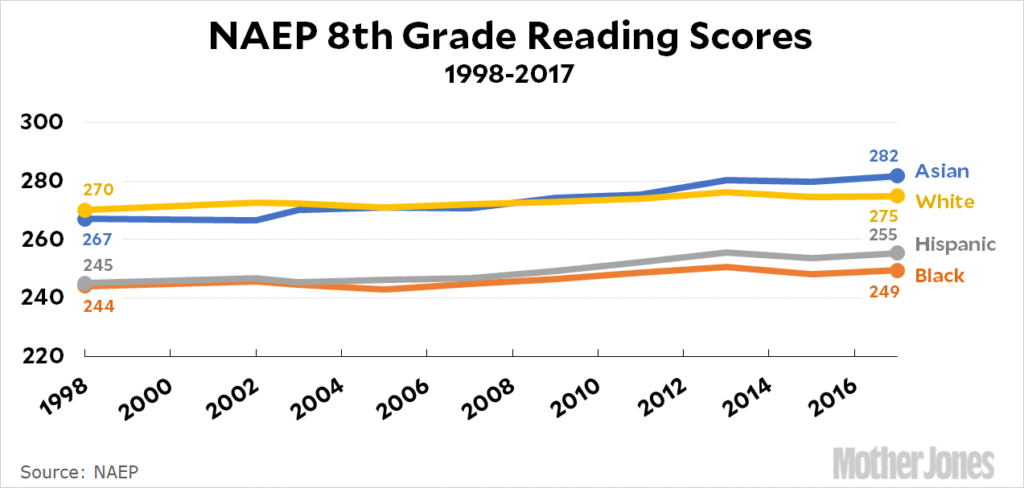Joseph Delaney points to a post by Kevin Drum pointing to a post by Bob Somerby pointing to a magazine article by Natalie Wexler that reported on the latest NAEP (National Assessment of Educational Progress) test results.
In an article entitled, “Why American Students Haven’t Gotten Better at Reading in 20 Years,” Wexler asks, “what’s the reason for the utter lack of progress in reading scores?”
The odd thing is, though, is that reading scores have clearly gone up in the past twenty years, as Somerby points out in text and Drum shows in this graph:

Drum summarizes:
Asian: +15 pointsWhite: +5 pointsHispanic: +10 pointsBlack: +5 points . . . Using the usual rule of thumb that 10 points equals one grade level, black and white kids have improved half a grade level; Hispanic kids have improved a full grade level; and Asian kids have improved 1½ grade levels.
Why does this sort of thing get consistently misreported? Delaney writes:
My [Delaney’s] opinion: because there is a lot of money in education and it won’t be possible to “disrupt” education and redirect this money if the current system is doing well. . . . It also moves the goalposts. If everything is falling apart then it isn’t such a crisis if the disrupted industry has teething issues once they strip cash out of it to pay for the heroes who are reinventing the system. But if current educational systems are doing well, and slowly improving through incremental change, then it is a lot harder to argue that there is a crisis in education, isn’t it?
Could be. The other thing is that it can be hard to get unstuck from a conventional story. We discussed a similar example a few years ago: that time it was math test scores, which economist Roland Fryer stated had been “largely constant over the past thirty years,” even while he’d included a graph showing solid improvements.